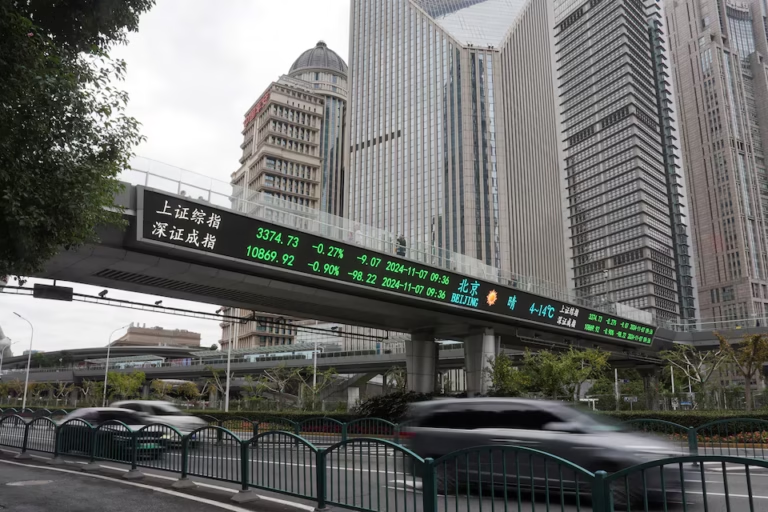Reuters: Will China Weaponize the Yuan in Trump’s Second Term? Financial markets are closely watching how China manages its currency, the yuan, as Donald Trump’s second term looms with the promise of hefty U.S. tariffs. Unlike the sharp yuan depreciation during Trump’s first presidency, analysts believe China will avoid drastic currency devaluation to protect its fragile economy and maintain financial stability. Let’s explore the nuances of this economic balancing act and the implications for global markets.
China’s Strategic Approach to the Yuan
1. Gradual Depreciation Expected
- Market Pricing Signals: Yuan forwards and interest rate derivatives suggest a controlled depreciation of 5-6% by year-end.
- Historical Context: During Trump’s first presidency, the yuan fell over 12% between March 2018 and May 2020 as tariff battles escalated.
2. Why Sharp Devaluation Is Unlikely
- Economic Fragility: The yuan is already weak, and China’s economy is grappling with slowing growth, capital outflows, and weakened exports.
- Diminished U.S. Trade Reliance: Exports to the U.S. now form a smaller portion of China’s overall trade, reducing the need for aggressive currency adjustments.
Key Insight: Analysts like Ju Wang from BNP Paribas believe that breaking the yuan significantly past the 7.3 mark against the dollar is unrealistic, with 7.7 seen as an upper limit.
Managing Currency Stability Amid Tariffs
1. PBOC’s Stabilization Measures
- Foreign Exchange Reserves: The People’s Bank of China (PBOC) has substantial reserves and experience managing external shocks.
- Policy Interventions: Strategies include setting a stronger-than-expected trading band for the yuan and encouraging companies to borrow abroad to attract dollars.
- Trade-Weighted Strength: The CFETS yuan index remains near a two-year high, indicating stability against a basket of currencies.
2. Balancing Domestic and Global Pressures
- Domestic Stability: To prevent residents and businesses from hoarding dollars or investing in gold, the PBOC prioritizes a stable yuan.
- International Perception: China’s leaders aim to avoid accusations of “beggar-thy-neighbor” currency devaluation tactics that could harm global trade dynamics.
Broader Market Impacts and Investor Outlook
1. Interest Rate Differentials
- China vs. U.S. Rates: The gap between U.S. and Chinese interest rates has widened to 300 basis points, contributing to yuan pressure.
- Policy Shifts: While China’s leaders pledged to support economic growth, markets are pricing out the likelihood of rate cuts, indicating a focus on currency stability.
2. Global Trade Adjustments
- Shift in Trade Hubs: Countries like Vietnam have grown as manufacturing hubs for Chinese goods, mitigating direct tariff impacts.
- Export Dynamics: Nearly half of China’s $1 trillion trade surplus now comes from non-U.S. markets.
Key Insight: Vishnu Varathan of Mizuho notes that while yuan pressures are inevitable in the near term, the PBOC will likely ensure trade-weighted stability is not compromised.
The Road Ahead for the Yuan China faces a delicate balancing act as it braces for Trump’s renewed trade tariffs. By adopting a gradual depreciation strategy and leveraging stabilization measures, the PBOC aims to navigate economic challenges without exacerbating global tensions. Investors should monitor key levels, such as the 7.7 yuan-per-dollar threshold, for insights into China’s policy direction.
Call to Action: Stay ahead of market trends with our in-depth analysis of global currencies and trade strategies. Subscribe now to receive expert insights delivered to your inbox!








